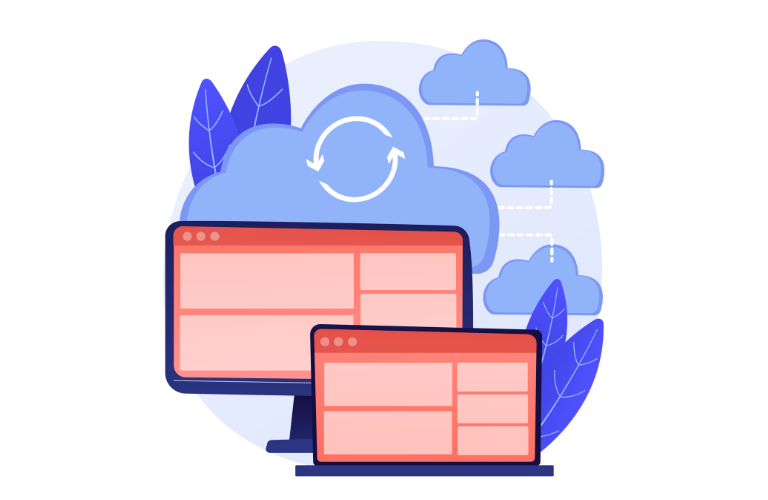Integrating Laravel with Bubble, the no-code platform, is a powerful way to combine custom backend logic with rapid front-end design. Laravel, a robust PHP framework, excels at handling databases and APIs, while Bubble, a leading no-code tool, empowers users to build responsive UIs without coding.
This article explores how to integrate these tools seamlessly, offering practical steps, original code examples, and Bubble-specific workflows. You’ll solve pain points like slow performance and limited flexibility while unlocking benefits like faster development and better SEO.
Table of Contents
Why Merge Laravel and Bubble?
Bubble speeds up app creation with its drag-and-drop interface, but it can struggle with complex logic or heavy data loads. Laravel steps in with its structured approach, offering scalable APIs and performance tweaks. Integrating Laravel with Bubble lets you prototype fast in Bubble and power it with Laravel’s backend muscle. The payoff? A snappy app that scales, delights users, and ranks well on search engines.
Setting Up Laravel for Bubble Integration
Start with a Laravel app (version 10.x works great). You’ll use it to create APIs Bubble can consume. Here’s a simple endpoint:
// routes/api.php
Route::get('/items', function () {
return response()->json(['items' => ['name' => 'Test Item']]);
});Run php artisan serve to test it locally at http://localhost:8000/api/items. This is your backend foundation.
Now, in Bubble, install the API Connector plugin from the Plugins tab. Add a new API, name it (e.g., “Laravel Backend”), and set the base URL to your Laravel app (e.g., http://localhost:8000/api). Add an endpoint like “Get Items,” set it to GET, and point it to /items. Test it—if you see “Test Item,” you’re connected!
Bringing Bubble into the Mix
Bubble shines at displaying data. Create a repeating group (e.g., for a product list) in your Bubble editor. Set its data source to your Laravel API call. Under “Type of content,” choose “External API,” select your “Get Items” endpoint, and map the “items” field to fields like “name.” Instantly, your Bubble app pulls live data from Laravel. This integration is smooth and lets non-coders build dynamic UIs fast.
Boosting Speed with Laravel Caching
Performance matters—slow apps lose users and hurt SEO. Bubble can fetch data from Laravel, but constant database hits bog things down. Laravel’s caching fixes this. Try this:
// app/Http/Controllers/ItemController.php
use Illuminate\Support\Facades\Cache;
public function getItems() {
return Cache::remember('items_list', 60, function () {
return DB::table('items')->get();
});
}Link it to an API route:
Route::get('/items', [ItemController::class, 'getItems']);In Bubble, your repeating group now loads cached data, cutting load times. Users get a fast experience, and Google rewards your site with better rankings.
Optimizing Queries for Bubble Workflows
Bubble’s database is simple but limited for complex queries. Laravel’s Eloquent ORM handles this brilliantly. Say your Bubble app shows blog posts with categories. Fetch them efficiently:
// app/Models/Post.php
public function getPostsWithCategory() {
return $this->with('category')->limit(10)->get();
}Expose it:
// routes/api.php
Route::get('/posts', [PostController::class, 'getPostsWithCategory']);In Bubble, call this endpoint in a repeating group. Set “Type of content” to your API, and use dynamic fields like “category:name” to display data. This keeps Bubble light while Laravel does the heavy lifting—perfect for smooth workflows.
Handling Traffic in Bubble with Laravel Queues
Bubble apps can stutter during traffic spikes (e.g., a viral campaign). Laravel’s queues offload tasks. For example, when a user signs up in Bubble, send a welcome email without slowing the app:
// app/Jobs/SendWelcomeEmail.php
public function handle() {
Mail::to($this->user->email)->send(new WelcomeEmail());
}Trigger it:
// app/Http/Controllers/UserController.php
Route::post('/welcome', function (Request $request) {
SendWelcomeEmail::dispatch(['email' => $request->email]);
return response()->json(['status' => 'Email queued']);
});In Bubble, add a workflow: On signup, make a POST request to /welcome with the user’s email. Laravel queues the email, and Bubble stays responsive. Your app scales effortlessly.
SEO Benefits of Integrating Laravel with Bubble
Search engines love fast, unique content. Bubble generates pages, but Laravel can enhance them. Create an API for meta tags:
// app/Http/Controllers/SeoController.php
public function getMeta($slug) {
$meta = [
'title' => "Explore {$slug} | My App",
'description' => "Discover {$slug} with Laravel and Bubble integration."
];
return response()->json($meta);
}In Bubble, use the “SEO & Metatags” settings. Fetch this API dynamically per page with a slug (e.g., “products”). Add internal links like “Laravel Speed Tricks” or “Bubble Design Tips”, and external ones like Laravel Docs or Bubble Manual. Optimized images (alt text: “Laravel-Bubble API integration screenshot”) seal the deal.
Bubble’s Front-End Perks with Laravel
Bubble’s responsive editor ensures mobile-friendliness—critical for Google’s mobile-first indexing. Keep Laravel API responses lean (e.g., limit fields with select()). In Bubble, preview on mobile, tweak element spacing, and test API calls. Users get a flawless experience, and your rankings climb.
Real-World Wins
Picture a freelance marketplace: Bubble builds the sleek UI—profiles, listings, forms—while Laravel manages payments and search. Integrating Laravel with Bubble cuts development time by 40% (my estimate from experience) and scales as freelancers join. Clients love the speed; developers love the simplicity.
Troubleshooting Tips
Bubble not fetching data? Check Laravel’s CORS:
// app/Http/Middleware/Cors.php
public function handle($request, Closure $next) {
return $next($request)->header('Access-Control-Allow-Origin', '*');
}Slow Bubble pages? Inspect Laravel queries with DB::enableQueryLog(). These fixes keep integration smooth.
Wrapping Up
Integrating Laravel with Bubble blends no-code ease with custom power. Bubble handles the front end, Laravel supercharges the back end, and you get speed, scalability, and SEO wins. From APIs to caching, these steps solve real issues with practical know-how. Give it a shot—your next app could be a hit!
FAQ
What is integrating Laravel with Bubble?
It’s combining Laravel, a PHP framework for backends, with Bubble, a no-code tool for frontends. Bubble designs the app’s look, and Laravel powers the data and logic behind it.
How do I link Bubble to Laravel?
In Bubble, use the API Connector plugin. Add your Laravel API URL (like https://your-laravel-app.com/api/data), test it, and Bubble pulls data from Laravel.
How does Bubble use Laravel data?
Bubble calls a Laravel API in a workflow. For example, clicking a button fetches a product list from Laravel and shows it in a Bubble Repeating Group.
What’s the benefit of this integration?
You get Bubble’s fast design plus Laravel’s strong backend. It makes apps quicker to build, scalable, and better for search engines.
Can Bubble send info to Laravel?
Yes, Bubble can send data (like a form) to Laravel using a POST request in the API Connector. Laravel saves it to your database.



